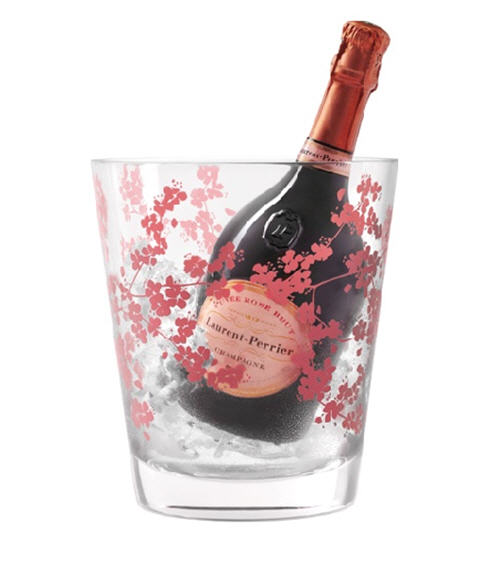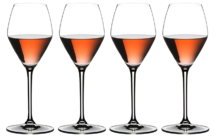
To mark its 40th year, the renowned rosé Champagne, Laurent-Perrier Cuvée Rosé Brut, has collaborated with Baccarat to create a decorative dual-purpose crystal ice bucket that also serves as a vase. The stylish ice bucket ($1,400 with a bottle of Cuvée Rosé Brut) was inspired by an original 1933 Baccarat design and decorated with a branch of pink cherry blossoms across the crystal vessel and gift box, which echoes the Champagne’s distinctive 17th-century bottle design. A limited edition of 250 Laurent-Perrier Baccarat vases have been created and are available now exclusively at Fox and Obel in Chicago, and will be available through select retailers this fall.
About Laurent-Perrier Cuvée Rosé Brut:
The best selling rosé Champagne in the world, Laurent-Perrier’s Cuvée Rosé Brut is one of the few rosés still made by the saignée method. To emphasize this traditional technique, the Champagne is elegantly showcased in an embossed bottle that is a reproduction of those used in the late 17th century.
This salmon-pink rosé Champagne is truly remarkable for its highly expressive bouquet, stemming from very careful preservation of fresh fruit aromas which occur during the winemaking. Using skin contact with 100% Pinot Noir grapes, also known as the saignée method, Laurent-Perrier’s know-how and attention to quality produces a finely crafted rosé with both depth and freshness. It has become the benchmark for rosé Champagne around the world.
Meticulous sorting of the grapes and controlled maceration help the extraction of color and reveal the full aromatic richness of the Pinot Noir grape. Unlike most rosé Champagnes, the base of Laurent-Perrier Cuvée Rosé Brut is obtained by drawing juice off of the grapes in the vat, rather than simply blending red and white wines. Cellaring length varies and is dependent on the wine in order to preserve its fresh red fruit aromas.
The Cuvée Rosé Brut makes a delicious aperitif. It pairs very well with pork or poultry, and is an extraordinary match for red fruit desserts. The most audacious may even pair it with Asian cuisine.



